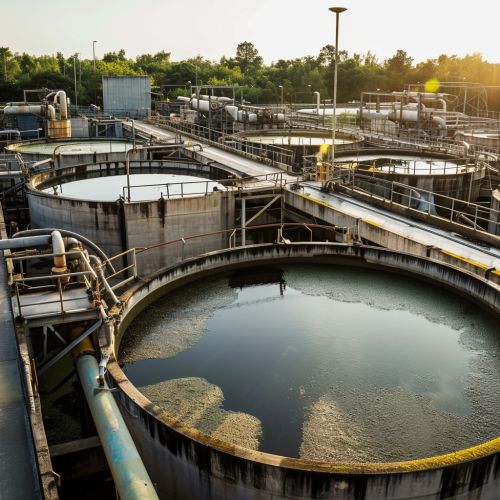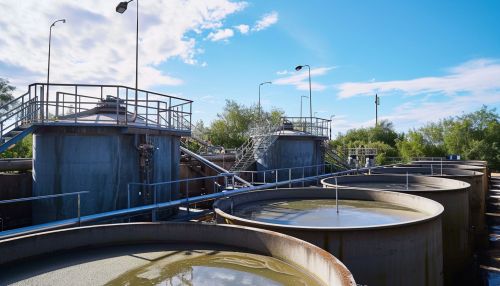Biological Wastewater Treatment
Introduction
Biological wastewater treatment is a process that uses naturally occurring organisms to break down the organic matter in wastewater. This process is considered an essential part of the water cycle, as it allows for the safe return of water to the environment and its reuse for various purposes.
Biological Wastewater Treatment Process


The biological wastewater treatment process involves three main stages: primary treatment, secondary treatment, and tertiary treatment.
Primary Treatment
The primary treatment stage involves the removal of large and small particles from the wastewater. This is achieved through the use of screening and sedimentation processes. The wastewater is passed through screens to remove large particles such as rags, sticks, and other debris. Sedimentation tanks are then used to allow smaller particles to settle at the bottom, forming a layer of sludge.
Secondary Treatment
The secondary treatment stage is where the biological aspect of the process comes into play. This stage involves the use of microorganisms to break down the organic matter in the wastewater. There are two main types of biological treatment processes used in this stage: aerobic and anaerobic processes.
Aerobic Process
The aerobic process involves the use of oxygen and aerobic bacteria to break down the organic matter. This process takes place in aeration tanks, where air is pumped into the wastewater to encourage the growth of aerobic bacteria. These bacteria consume the organic matter in the wastewater, converting it into carbon dioxide, water, and other by-products.
Anaerobic Process
The anaerobic process, on the other hand, takes place in the absence of oxygen. Anaerobic bacteria are used in this process, which break down the organic matter into methane, carbon dioxide, and other by-products. This process is often used in the treatment of sludge and in the treatment of industrial wastewaters that contain high levels of organic matter.
Tertiary Treatment
The tertiary treatment stage involves the removal of any remaining particles and pollutants from the wastewater. This is achieved through the use of various physical, chemical, and biological processes. These may include filtration, disinfection, and nutrient removal processes.
Types of Biological Wastewater Treatment Systems
There are several types of biological wastewater treatment systems, each with its own advantages and disadvantages. These include activated sludge systems, trickling filter systems, and rotating biological contactor systems.
Activated Sludge Systems
Activated sludge systems are one of the most common types of biological wastewater treatment systems. They involve the use of aeration tanks and a secondary clarifier. The wastewater is aerated in the aeration tanks, promoting the growth of aerobic bacteria. The bacteria consume the organic matter in the wastewater, and the resulting sludge is then separated from the treated water in the secondary clarifier.
Trickling Filter Systems
Trickling filter systems involve the use of a bed of porous material, such as rocks or plastic media, over which the wastewater is distributed. Bacteria grow on the surface of the media and consume the organic matter in the wastewater as it trickles over the media.
Rotating Biological Contactor Systems
Rotating biological contactor systems involve the use of a series of rotating disks that are partially submerged in the wastewater. Bacteria grow on the surface of the disks and consume the organic matter in the wastewater as the disks rotate.
Advantages and Disadvantages of Biological Wastewater Treatment
Biological wastewater treatment has several advantages over other types of wastewater treatment. These include its ability to effectively remove organic matter from wastewater, its relatively low cost, and its environmental friendliness. However, it also has some disadvantages, such as the need for careful monitoring and control, the potential for odour problems, and the production of sludge that needs to be properly managed.
Future of Biological Wastewater Treatment
The future of biological wastewater treatment lies in the development of more efficient and sustainable treatment processes. This includes the use of advanced biological processes, such as membrane bioreactors and biological nutrient removal processes, and the recovery of resources from wastewater, such as energy and nutrients.
